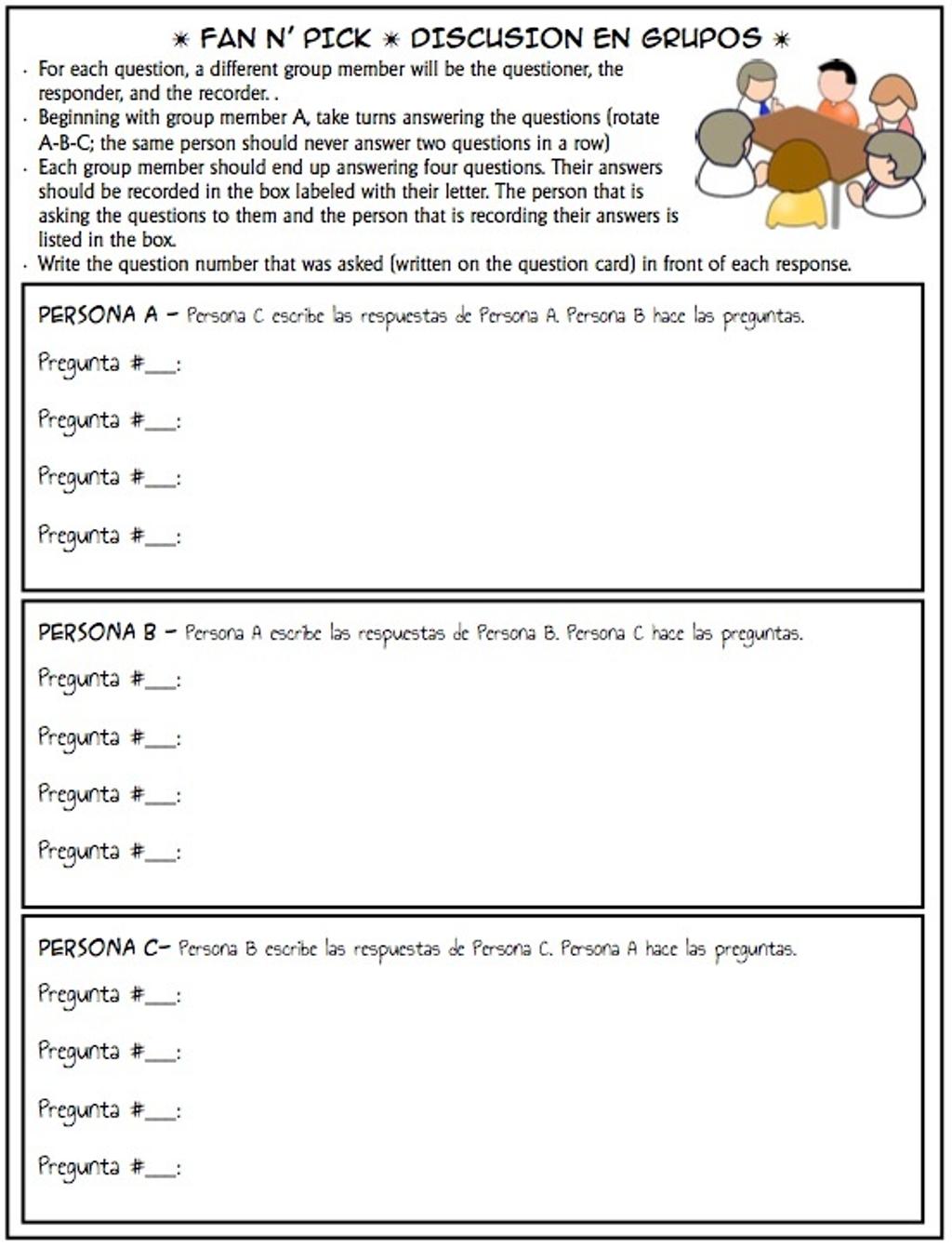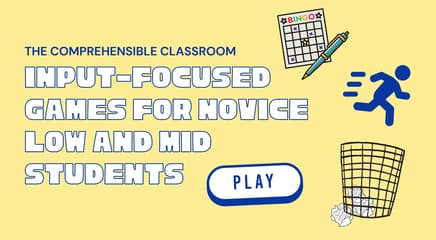Fan 'n' pick is one of my favorite Kagan structures, but it is also one of the most complicated ones for my students to learn. After several years of painful trial-and-error structure intros to six or seven groups of students, I think that I have finally developed a system that works.
The key? Use forms. If kids don't have a form, they flop. (Some will flop even with the form, but the flopping is greatly reduced!)

This (free) document includes a form (one version in English, one in Spanish) for students to use for recording answers, and it includes a sign that you can post on your board (in three different formats) for students to reference so that they know how to rotate roles.
I always use 12 discussion questions and do the activity in groups of three students, so that each student has to answer four questions. Instead of creating groups of four when the class doesn't divide perfectly into groups of three, I form one or two groups of two students. The above form includes a modified form that groups of two can use so that they don't get confused--I just combine the roles of asking and recording.
- Write out 12 questions about whatever you are learning, write each one on its own line or square on an 8x11” piece of paper, and make a copy for each group.
- Cut up the questions so that you have 12 question cards.
- Split students into teams of 2-3 students.
- Assign each student a letter that corresponds with a role: (A) Asking the question [and a follow-up question], (B) Answering the question, (C) Recording the answer.
- Student A fans out the question cards, upside-down, like you would at the beginning of a magic trick (“Pick a card, any card!”), and holds them out to Student B.
- Student B chooses a question and hands it to Student A, who reads it aloud, then hands the card back to Student B.
- Student B ponders his or her answer for 20 seconds, and then he or she responds.
- [Optional: Student A asks a follow-up question (for another detail, clarification, etc.)].
- Student C records Student B’s original and elaborated response in a complete sentence. (If there are only two students in the group, combine the Asking and Recording roles.)
- Roles switch by rotating them one person to the left, and a new question is tackled.
- Give the students enough time for everyone to answer at least twice before stopping the activity. Then, if you want, you can have students write out answers to two or three of the questions that were left over.
I made up two sets of questions that can probably be used to discuss any story, and you can download them here. One set is labeled “Advanced” and includes higher-level thinking questions, while the other is labeled “Basic” and includes low-level questions. Each set is provided in Spanish and in English, so that other language teachers can translate them if desired. There is also a blank template so that you can write other questions to modify the activity for whatever other purpose you may have--here are some ideas:
- Discussing school supplies: what you have/need/want for different classes and why…could be used for just about any new vocabulary set
- Practicing a verb tense: just make sure the questions would require students to answer in the tense that you’re practicing
- PQA: Personalized questions to get kids talking about their lives: likes/dislikes, good/bad habits, families, activities, etc.
- Discussing articles…reactions to what you read, comparing/contrasting to other events, etc.
If you make a question set that you'd like to share, please send it to me and I'll post it!!




